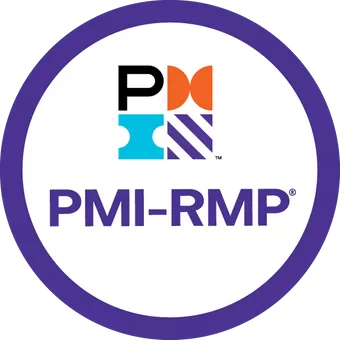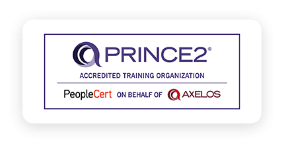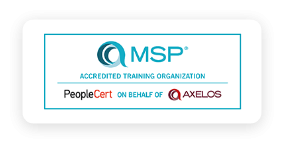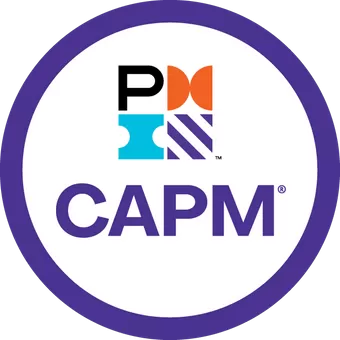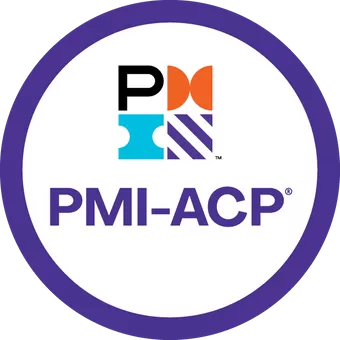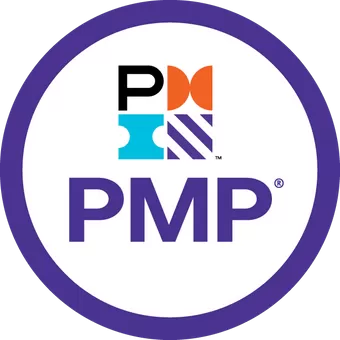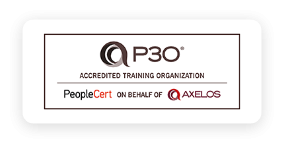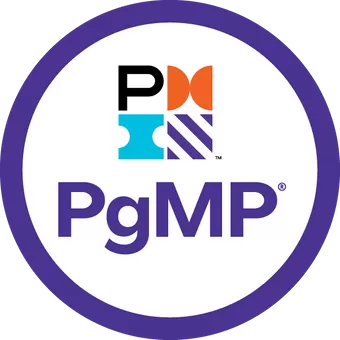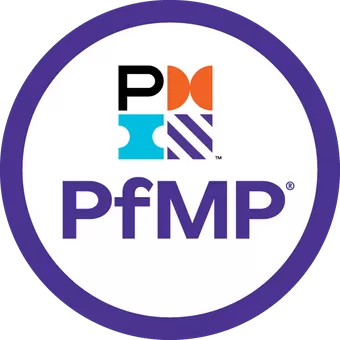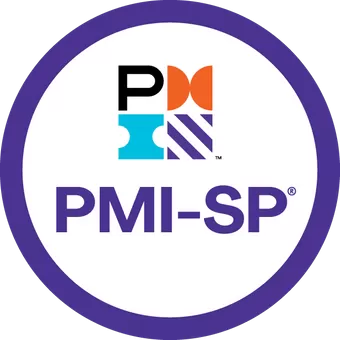
BAC Project Management: Understanding Budget At Completion, Its Methods And Calculation
Written By : Bakkah
25 Apr 2024
In project management, Budget At Completion (BAC) serves as a cornerstone for financial planning and control. This article delves into the essence of BAC, elucidating its definition, calculation methods, practical applications, and pivotal role in project success.
Understanding BAC empowers project managers to make informed decisions, effectively manage project finances, and ensure alignment with stakeholders' expectations.
What is Budget at Completion?
In project management, Budget At Completion (BAC) refers to the total budget allocated to complete a project. It represents the estimated total cost of all project activities, including resources, materials, labor, and other expenses necessary to achieve the project's objectives.
BAC serves as a baseline against which actual project costs are compared to monitor and control project expenditures. It is typically established during the project planning phase based on detailed cost estimation techniques such as bottom-up estimating or parametric estimating.
BAC is an essential component of the project management plan and is used to track the overall financial health of the project throughout its lifecycle. During project execution, project managers compare the actual costs incurred against the BAC to determine whether the project is on budget, under budget, or over budget.
This comparison helps in making informed decisions regarding resource allocation, cost management strategies, and adjustments to the project plan to ensure that the project remains within budget constraints.
BAC Project Management Formula
The formula for Budget At Completion (BAC) in project management is quite straightforward:
BAC=Planned Budget
In other words, the BAC is simply the total budgeted amount allocated for the entire project. It's the sum of all planned costs for all the project activities, resources, materials, labor, overhead, and other relevant expenses required to complete the project.
Once the BAC is determined, it serves as a baseline against which actual project costs are compared throughout project's lifecycle.
Comparing actual costs to the BAC helps project managers track the project's financial performance, identify any deviations from the original budget, and take corrective actions to keep the project on track financially.
BAC Project Management Example
Let's say you have a project to develop a mobile application. You estimate that the total cost for the project, including development, testing, marketing, and other expenses, will be $50,000.
In this case, the Budget At Completion (BAC) is $50,000.
Throughout the project, you'll compare actual expenses against this budget to ensure you stay on track financially. If you spend less than $50,000, you're under budget, and if you spend more, you're over budget. The BAC serves as a reference point to gauge the financial health of the project.
Why is BAC Important?
BAC (Budget At Completion) is crucial in project management as it sets a baseline for comparing actual costs, aids in financial planning and risk management, enables performance measurement and ensures transparent communication with stakeholders about the project's financial status, ultimately contributing to project success.
Here is a detailed discussion of the importance of Budget At Completion (BAC) in project management:
1. Baseline for Comparison
BAC serves as a baseline against which actual project costs are compared. This comparison helps project managers assess whether the project is on budget, under budget, or over budget, enabling them to take corrective actions as necessary to maintain financial control.
2. Financial Planning and Management
BAC provides a comprehensive view of the total planned budget for the project, helping in financial planning and resource allocation. It allows project stakeholders to make informed decisions about funding, investment, and resource allocation throughout the project lifecycle.
3. Risk Management
BAC includes contingency reserves to account for unforeseen risks or uncertainties. By having a clear understanding of the total budget, project managers can effectively manage risks and allocate resources to mitigate potential cost overruns or delays.
4. Performance Measurement
BAC facilitates the measurement of project performance in terms of cost efficiency. By comparing actual costs against the budget, project managers can evaluate the project's financial performance and identify areas for improvement or optimization.
5. Stakeholder Communication
BAC provides a common reference point for communicating project financial status to stakeholders, including sponsors, clients, and team members. It enhances transparency and accountability by ensuring that all stakeholders are informed about the project's financial health.
Overall, BAC plays a crucial role in ensuring that projects are delivered within budget constraints, thereby contributing to the success and sustainability of the project.
How to Determine Budget at Completion
Determining the Budget At Completion (BAC) involves estimating the total cost of the project based on various factors and considerations. Here are some tips for determining BAC in project management:
1. Define the Scope of Work
Clearly define the scope of the project, including all the activities, deliverables, and milestones that need to be accomplished.
2. Identify Project Activities
Break down the project into smaller, manageable tasks or work packages. Identify all the activities required to complete the project.
3. Estimate Costs for Each Activity
Estimate the costs associated with each activity. That includes resources, materials, labor, equipment, overhead, and other relevant expenses.
4. Use Cost Estimation Techniques
Employ various cost estimation techniques such as bottom-up estimating, parametric estimating, or analogous estimating to arrive at realistic cost estimates for each activity.
5. Consider Contingency and Management Reserves
Factor in contingency reserves to account for unexpected risks or uncertainties that may arise during the project. Also, allocate management reserves for unforeseen changes or scope adjustments.
6. Sum Up Planned Costs
Sum up all the planned costs for each activity to determine the total planned budget for the project.
7. Validate and Review
Validate the cost estimates by reviewing them with stakeholders and subject matter experts or using historical data from similar projects. Ensure that the estimates are realistic and comprehensive.
8. Document the BAC
Once you have determined the total planned budget, document it as the Budget At Completion (BAC) in the project management plan.
9. Monitor and Control
Continuously monitor project expenses and compare them against BAC throughout the project lifecycle. Implement effective cost management strategies to keep the project on track financially.
By following these steps, you can accurately determine the Budget At Completion (BAC) for your project, providing a solid foundation for effective financial management and control.
3 Methods for Determining BAC
There are various methods for determining the Budget At Completion (BAC) in project management, each offering unique approaches to estimating the total project budget. Three commonly used methods include:
1. Bottom-Up Estimating
This method involves estimating the cost of individual project tasks or work packages and then aggregating these estimates to arrive at the total project budget. It requires detailed analysis and estimation of resources, labor, materials, and other costs for each activity.
2. Top-Down Estimating
In this approach, an overall budget is allocated to the project based on high-level estimates or historical data from similar projects. The total budget is then distributed among various project activities based on predefined percentages or allocation methods.
While quicker than bottom-up estimating, it may lack accuracy for detailed cost planning.
3. Parametric Estimating
Parametric estimating involves using statistical relationships or mathematical models to estimate project costs based on specific variables or parameters. This method leverages historical data and regression analysis to predict costs for similar activities or projects. It can be efficient and accurate when sufficient historical data is available.
These methods provide different approaches to determining the BAC, and project managers often use a combination of them to arrive at a comprehensive and realistic budget for their projects.
How do you Calculate BAC and EAC?
To calculate both Budget At Completion (BAC) and Estimate At Completion (EAC) in project management, you need to follow specific formulas and considerations:
1. Budget At Completion (BAC)
BAC represents the total budgeted cost of the project, i.e., the total amount of money planned to be spent on the project from start to finish. It's typically determined during the project planning phase.
To calculate BAC, you sum up all the individual budgeted costs for the project's tasks, resources, materials, etc. Example: If a project is budgeted for $100,000, then BAC = $100,000.
2. Estimate At Completion (EAC)
EAC represents the estimated total cost of the project at completion, based on performance and current conditions. It's calculated during the project execution phase to forecast the final cost considering project performance to date.
There are different methods to calculate EAC depending on the situation:
- EAC = AC + (BAC - EV): This formula is used when you expect the future performance of the project to be similar to the past performance.
- EAC = BAC / CPI: This formula is used when you expect the future performance of the project to be different from past performance and want to incorporate the cost performance index (CPI).
- EAC = AC + (BAC - EV) / (CPI * SPI): This formula is used when both cost and schedule performance indices are considered.
- EAC = AC + (ETC): This formula is used when you are simply adding the estimated remaining costs to the actual costs incurred so far.
Where:
- AC (Actual Cost) is the total actual costs incurred to date.
- EV (Earned Value) is the value of the work actually performed so far.
- CPI (Cost Performance Index) is the ratio of EV to AC (EV/AC).
- SPI (Schedule Performance Index) is the ratio of EV to PV (EV/PV).
- ETC (Estimate to Complete) is the estimated cost to complete the remaining work.
These calculations help project managers assess the current status of the project and make informed decisions about resource allocation, schedule adjustments, and budget management.
How to Calculate EAC Using the Earned Value Method?
To calculate the Estimate at Completion (EAC) using the earned value method, you can use the following formula:
EAC = BAC /CPI
Where:
- EAC is the Estimate at Completion.
- BAC is the Budget at Completion (total budgeted cost of the project).
- CPI is the Cost Performance Index.
The Cost Performance Index (CPI) is calculated as the ratio of Earned Value (EV) to Actual Cost (AC). Therefore:
CPI = EV / AC
Where:
- EV is the Earned Value (the value of the work actually performed).
- AC is the Actual Cost (total actual costs incurred to date).
So, to calculate EAC using the earned value method, you need to know the BAC, EV, and AC.
Here's a step-by-step process:
- Calculate the CPI: CPI = EV / AC
- Use the CPI to calculate the EAC: EAC = BAC / CPI
Example: If a project has a BAC of $100,000, AC of $40,000, and EV of $30,000, then:
EAC = $100,000 / ($30,000 / $40,000) = $133,333.33.
This method assumes that the project's future performance will continue at the same efficiency rate as demonstrated by the Cost Performance Index (CPI) so far.
How to Calculate EAC Using the Forecast Method?
To calculate the Estimate at Completion (EAC) using the forecast method, you typically use the following formula:
EAC = AC + (BAC − EV)
Where:
- AC is the Actual Cost (the total actual costs incurred to date).
- BAC is the budget at completion, which represents the total budgeted cost for the project.
- EV is the earned value, representing the value of the work actually completed up to the reporting date.
Let's illustrate this with an example:
Suppose you're managing a software development project with a budget at completion (BAC) of $100,000. However, due to various issues, the project is running behind schedule and over budget. At the reporting date, you find that the actual cost (AC) incurred so far is $60,000, and the earned value (EV) of completed work is $40,000.
Using the forecast method, you can calculate the EAC as follows:
EAC = AC + (BAC − EV)
EAC = $60,000 + ($100,000 - $40,000)
EAC = $60,000 + $60,000
EAC = $120,000
So, based on the forecast method, the Estimate at Completion (EAC) for the project is $120,000. This implies that if the current trends continue, the project is forecasted to be completed at a total cost of $120,000, which is $20,000 over the original budget.
How to Choose the best method for calculating EAC
Choosing the best method for calculating the Estimate at Completion (EAC) in project management typically involves assessing the project's current performance and predicting future costs accurately.
The most suitable method depends on various factors including the project's complexity, available data, and the level of uncertainty. Two commonly used methods are the EAC based on the budget at completion (BAC) and the EAC based on the actual cost (AC).
For projects where the original budget remains valid, and there are no significant changes anticipated in the remaining work, the EAC based on BAC might be appropriate.
Conversely, if the project has encountered unexpected challenges or if there are significant deviations from the initial plan, the EAC based on AC can provide a more accurate estimate by considering the actual costs incurred and adjusting future projections accordingly.
Ultimately, selecting the best method requires careful evaluation of the project's current status and future outlook to ensure accurate forecasting and effective cost management.
Enhance Your PM Skills with Bakkah's Courses!
Are you ready to elevate your project management prowess to unprecedented heights? Look no further than Bakah's Courses!
Explore the importance of Budget at Completion (BAC) in project management and advance your career with specialized courses from Bakkah Learning. Whether you're interested in Project Management Professional (PMP®), Certified Associate in Project Management (CAPM®), or PMI Agile Certified Practitioner (PMI-ACP®), our courses delve deep into BAC concepts.
Additionally, we offer courses in Program Management Professional (PgMP®), PMI Scheduling Professional (PMI-SP), Risk Management Professional (PMI-RMP), Projects In Controlled Environments (PRINCE2®), Managing Successful Programmes (MSP), and other relevant certifications.
Seize this opportunity to enhance your skills and accelerate your professional journey. Enroll now and take a significant step toward your career goals!
Conclusion
In conclusion, mastering the concept of Budget at Completion (BAC) is indispensable for effective project management. By understanding its significance, employing suitable calculation methods, and adhering to best practices, project managers can navigate the complexities of budgeting with confidence, ensuring project success and stakeholder satisfaction.



